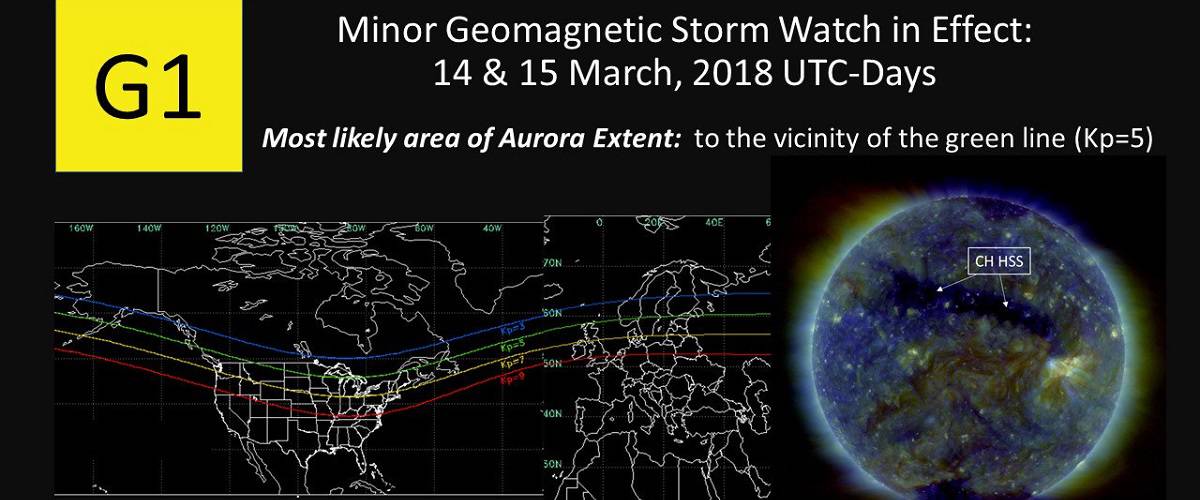NASA recently announced a category G1 geomagnetic storm would hit earth sometime between March 14 and 15. Sounds hardcore, right? Don’t worry, you’re most likely safe.
A G1 Watch is in effect for the 14 & 15 March, 2018 UTC-days. Enhancements in the solar wind due to the anticipated effects of a coronal hole high speed stream (CH HSS) are expected to cause the escalated geomagnetic responses. Visit https://t.co/dimAHi8BFd for the latest info. pic.twitter.com/doJIzMWaGe
— NOAA Space Weather Prediction Center (@NWSSWPC) March 12, 2018
Geomagnetic Storms Sound Serious
When people hear the name, they envision massive EMPs from mother nature. The truth is that solar storms happen hundreds of times a year. While this one is a major storm, by comparison, the worst you’ll experience is some faulty magnets, if even that. When the sun emits superheated plasma, otherwise known as a coronal mass ejection (CME), it can trigger a geomagnetic storm. That storm then can cause solar flares, a release of magnetic energy that we know as aurora borealis.
So What Does this Mean for Me?
If you live near the northern United States, you might be able to catch a look at the northern lights for yourself. It’s a rarely seen event, due to its rarity and difficulty. The best place to go is out of the city, and as far from artificial light as possible.
Worst Case Hypothetical
Prepping is about being ready for the worst. So if this was a geomagnetic storm intense enough to cause problems, here’s what to expect.
They, as the name suggests, disrupt magnetic waves. This is first seen with the planet’s polar alignments. Scientists have theorized that the constant abuse Earth takes of these storms are slowly breaking down out magnetic poles. They believe when this happens, it will cause a reversal. North becomes south. This shift could cause some heavy disruptions for navigational software. Everything from your TomTom GPS to commercial airliner tracking could be thrown off. Some might even experience power loss. Learn to use more than a compass for finding north, and have backup power systems in place, and you should be safe to handle whatever a solar black could dish out.

